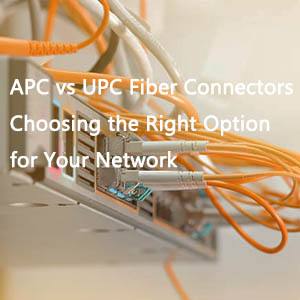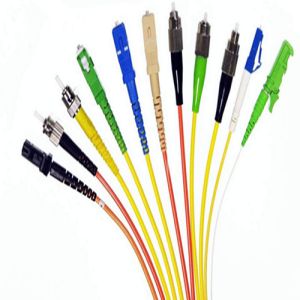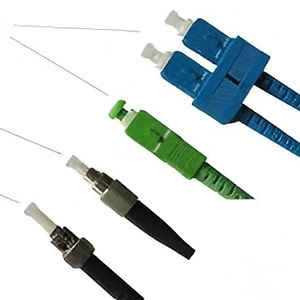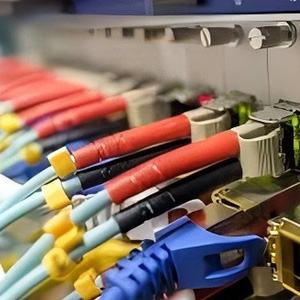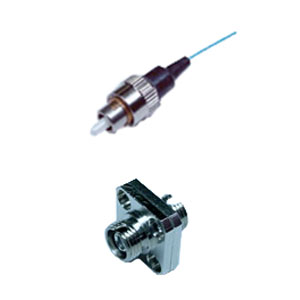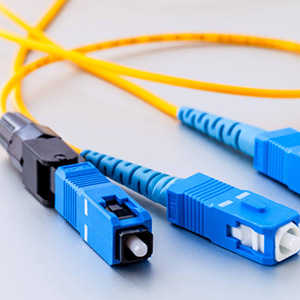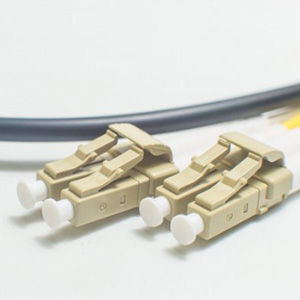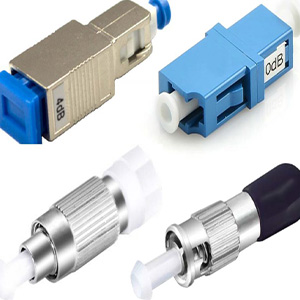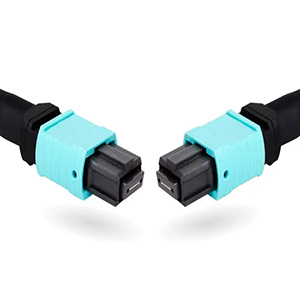Utilizing pulses of light to carry data, fiber optic networks offer unparalleled speed, bandwidth, and reliability, establishing themselves as the foundation of contemporary telecommunications infrastructure.This article delves into the realm of fiber optic network adapters, examining their pivotal role in linking devices to these high-performance networks and the myriad benefits they bestow upon our digital existence.
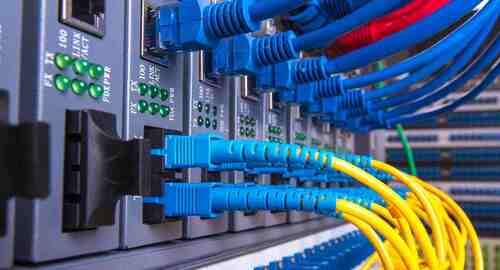
Understanding Fiber Optic Networks Fiber optic networks are predicated on specialized cables that transmit data via light signals. Distinguished from traditional copper-based networks, these cables are composed of ultra-thin strands of glass or plastic known as optical fibers. These fibers excel in the transmission of light signals over extensive distances with minimal signal degradation.
The fiber optic cable’s structure comprises several layers. At its heart lies the optical fiber, responsible for conducting light signals. Encircling the fiber is the cladding, a reflective layer that redirects light back into the core, thus averting signal loss. An outer protective jacket envelops the entire structure, ensuring durability and safeguarding against environmental hazards.
Data in fiber optic networks is transmitted through a phenomenon known as total internal reflection. Light signals, often generated by lasers or LEDs as pulses, are injected into the fiber optic cable. These signals ricochet off the cladding, traversing the core via successive reflections until they reach the cable’s terminus. The received light signals are then translated back into electrical signals, rendering them intelligible to the connected devices.
Fiber optic networks outclass traditional copper-based networks in several respects:
- They support significantly higher data transmission rates, capable of processing Gigabits or even Terabits of data per second.
- They possess a substantially larger bandwidth, facilitating the concurrent transmission of vast data volumes without congestion. Their immunity to electromagnetic interference further bolsters their reliability and mitigates signal degradation.
- Fiber optic networks can extend over much greater distances than copper cables, rendering them supreme for long-distance communication requirements.
Comprehending the architecture and functionality of fiber optic networks is essential to appreciating their contributions to modern telecommunications and data transmission.
What is a Fiber Optic Network Adapters?
A fiber optic network adapters, synonymous with a fiber optic NIC (Network Interface Card) or transceiver, is an intermediary that facilitates the connection between devices and fiber optic networks. Its core function is to bridge the divide between the fiber optic infrastructure and devices lacking native fiber optic ports.
The adapter is instrumental in interfacing devices with fiber optic networks by converting optical signals to electrical signals, and vice versa. It enables communication between devices such as computers, servers, or routers and the fiber optic network’s high-speed, high-bandwidth capabilities.
The market offers a variety of fiber optic network adapters to cater to diverse networking needs. A prevalent type is the Ethernet fiber optic adapter, which integrates Ethernet-capable devices with fiber optic networks. These adapters typically feature a standard Ethernet interface, such as RJ-45, on one end and a fiber optic connector, such as LC or SC, on the other.
The SFP (Small Form-factor Pluggable) adapter is another type, a hot-swappable transceiver module that supports a spectrum of fiber optic network standards, including Ethernet, Fibre Channel, and SONET/SDH. The adaptability of SFP adapters lies in their interchangeability to meet varying network specifications.
Media converters are standalone devices that translate signals between different media types, such as copper and fiber optic. They are invaluable for connecting devices with disparate interface types or for merging existing copper-based networks with fiber optic infrastructure.
Key Features and Benefits Fiber optic network adapters are celebrated for their array of features and benefits that enhance their appeal and efficacy in contemporary networking scenarios:
- High-speed data transmission capabilities: A primary advantage of fiber optic network adapters is their capacity for lightning-fast data transmission. By harnessing the speed of light, fiber optic technology facilitates swift and efficient data transfers, enabling rapid downloads, smooth multimedia streaming, and uninterrupted real-time communication.
- Enhanced bandwidth and reduced latency: Fiber optic networks provide a significantly greater bandwidth compared to their copper counterparts. This expanded capacity permits the simultaneous transmission of substantial data volumes without congestion or delays. Additionally, fiber optic adapters contribute to diminished latency, leading to swifter response times and superior performance for demanding applications like online gaming and video conferencing.
- Secure and reliable connectivity: Fiber optic cables offer inherent security against eavesdropping and interference. The deployment of light signals over electrical signals complicates unauthorized access to the network, ensuring data confidentiality. Furthermore, fiber optic networks are impervious to electromagnetic interference, ensuring a stable and dependable connection even in electrically noisy environments or near power lines.
- Compatibility with various devices and network configurations: Fiber optic network adapters are engineered to be compatible with an extensive range of devices and network configurations. They can be seamlessly integrated into existing infrastructures or utilized with devices devoid of built-in fiber optic ports. This adaptability renders fiber optic adapters suitable for a multitude of applications, from connecting individual computers to supporting complex network architectures in data centers or enterprise settings.
Applications and Use Cases Fiber optic network adapters are deployed across various domains, offering considerable advantages over conventional network connectivity solutions.
Fiber optic network adapters are particularly beneficial in environments that demand high-speed internet access. In residential settings, they facilitate seamless streaming of high-definition multimedia content, enhance online gaming experiences, and support video conferencing. In the workplace, they bolster data transmission efficiency, boosting productivity through large file transfers, cloud-based applications, and collaborative work environments. In data centers, these adapters are indispensable for managing substantial data loads, ensuring swift and dependable connectivity for critical applications, virtualization, and high-performance computing.
Fiber optic network adapters excel in scenarios requiring high bandwidth and uninterrupted connectivity. In media and entertainment sectors, they ensure the smooth transmission of extensive media files, aiding in video editing, content creation, and distribution. In healthcare, they are vital for bandwidth-intensive applications such as telemedicine, medical imaging, and electronic health records, which rely on rapid and secure data transmission. Moreover, fiber optic adapters cater to the burgeoning demand for Internet of Things (IoT) devices, enabling seamless connectivity and data exchange in smart homes, smart cities, and industrial automation.
In these diverse applications, fiber optic network adapters provide the requisite speed, bandwidth, and reliability to meet the challenges of our data-intensive and interconnected era. Their versatility and performance are indispensable for unlocking the full potential of fiber optic networks across a spectrum of settings and industries.
Future Trends and Developments The future of fiber optic network adapters is replete with promising advancements, driven by ongoing innovations in fiber optic technology and their integration with emerging technologies.
Fiber optic technology is in a state of perpetual evolution, continually pushing the limits of data transmission capabilities. Developments in optical fiber materials, such as hollow-core and multicore fibers, are poised to escalate data transfer speeds and bandwidth, fostering even more efficient network adapters. Moreover, photonics innovations, including integrated photonic circuits and sophisticated modulation techniques, are set to enhance the performance and compactness of network adapters, heralding an era of smaller, faster, and more energy-efficient devices.
Fiber optic network adapters are anticipated to play a pivotal role in the amalgamation of emerging technologies. With the proliferation of the Internet of Things (IoT), these adapters can provide the high-speed, low-latency connectivity necessary to support the expansive network of interconnected devices and sensors. This integration promises seamless data transmission and communication among IoT devices, amplifying efficiency and enabling real-time data analysis. Furthermore, the emergence of 5G networks will heavily rely on fiber optic infrastructure, with fiber optic adapters serving as indispensable components for linking 5G-enabled devices to ultra-fast and low-latency wireless networks.


